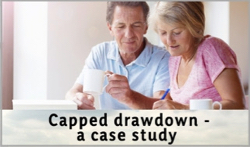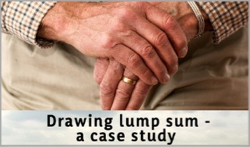Death and drawing of benefits
This is not the most uplifting topic, but it is essential that members know what can happen to their scheme.
Where will your funds go in the event of death?
Following the October 2024 Budget, the government intend to bring inherited pensions within the scope of Inheritance Tax with effect from 6th April 2027. HMRC are issuing a technical consultancy document on this, once further information is known we will update our clients through our newsletters.
In brief - Tax Charges on Lump Sums:
Pre 75 death – Nil if 'designated' within two years of date of notification of death (referred to as the two year window) – recipient's marginal rate if designated after two year window or trust rate of 45% if applicable.
Post 75 death – recipient's marginal rate. However, if paid to a discretionary trust on death, the tax charge remains at 45%.
As an alternative to paying a Lump Sum on death, a drawdown pension can be paid to any beneficiary upon death, and eventually their successor.
From 6 April 2024, if a uncrystallised lump sum death benefit is paid and the lump sum and death benefit (LS&DBA) allowance of £1,073,100 is exceeded, if paid within (the two year window), the excess is taxed as pension income. If paid outside the two year window, then the whole lump sum including the excess is subject to the special lump sum death benefit charge (45%).
Death before age 75
Crystallised or uncrystallised funds can pass on to any beneficiary (who does not need to be a dependant) as a lump sum or as a drawdown pension. The lump sum (if paid after two years of death) is subject to the recipients marginal rate of income tax, as is the drawdown pension. In respect of either uncrystallised or crystallised funds, up to the LS&DBA, these can be paid tax-free. If over the LS&DBA and paid within two year window, excess is taxed as pension income (or trust rate of 45% if applicable). If lump sum not paid within two year window, then whole lump sum including excess over LS&DBA, subject to the special lump sum death benefit charge. However, lump sum death benefit paid from crystallised funds by individual prior to 06/04/2024, who dies after 06/04/2024 will not be tested against the LS&DBA.
Death after age 75
Any crystallised or uncrystallised funds can be paid as either a lump sum subject to marginal rate of income tax or as a drawdown pension subject to income tax. There are no lifetime allowance tests or LS&DBA tests on death post age 75. Assets can remain in your SSAS for years after death, benefitting from tax free growth and income, and potentially providing an income for your beneficiaries and their beneficiaries for years to come.
Pension scheme members need to nominate Beneficiaries who can receive benefits from an individual’s fund on their death. The Beneficiary does not have to be a dependant and can be anyone nominated by the deceased member. The Beneficiaries nominated by the deceased member will 'inherit' their remaining accumulated fund. Regardless of whether the deceased member had crystallised their pension fund or not, if they died before age 75, any payments made to the Beneficiaries are paid tax-free provided they are designated for payment within two years of the member’s death and they do not exceed the LS&DBA test. Where the member dies after age 75 all payments are subject to the Beneficiary’s marginal rate of income tax except where the death benefits are paid to a discretionary trust (or other non-qualifying individual) where tax at 45% will apply. Beneficiaries can choose to receive their withdrawals from the inherited fund in any of the following forms: Uncrystallised Funds Lump Sum Death Benefit (if they inherit uncrystallised pension funds), Flexi-Access Drawdown or annuity purchase. If a Beneficiary dies with unused inherited funds, these can be passed to a nominated successor to pay a successor’s Flexi-Access Drawdown Fund or Flexi-Access Drawdown Lump Sum death benefit. Similar changes have been made in respect of annuities so that pension death benefits from money purchase arrangements in the form of an annuity can be paid to anyone, not just a dependant, and payments from the annuity can be made tax free where the member dies before age 75. The option to nominate a charity to receive a tax-free Charity Lump Sum death benefit is available, although this can only be paid where there are no surviving dependants of the member.
Currently, withdrawals following death can be passed on for generations; the tax treatment varies depending upon the ages of the successor, as detailed in the following example:
1st death – member aged 80 – nominee income taxable at marginal rate
2nd death – nominee aged 71 – successor income not taxable
3rd death – successor aged 80 new successor income taxable at marginal rate
This means that the tax advantages of pensions can be retained and benefit investment growth potentially for generations so long as withdrawls are carefully measured. SSAS is therefore an excellent inheritance planning tool.


